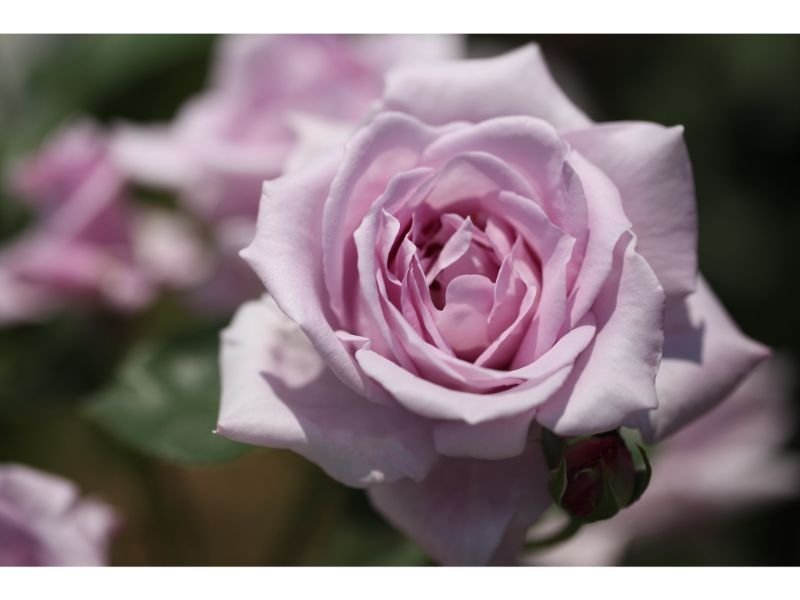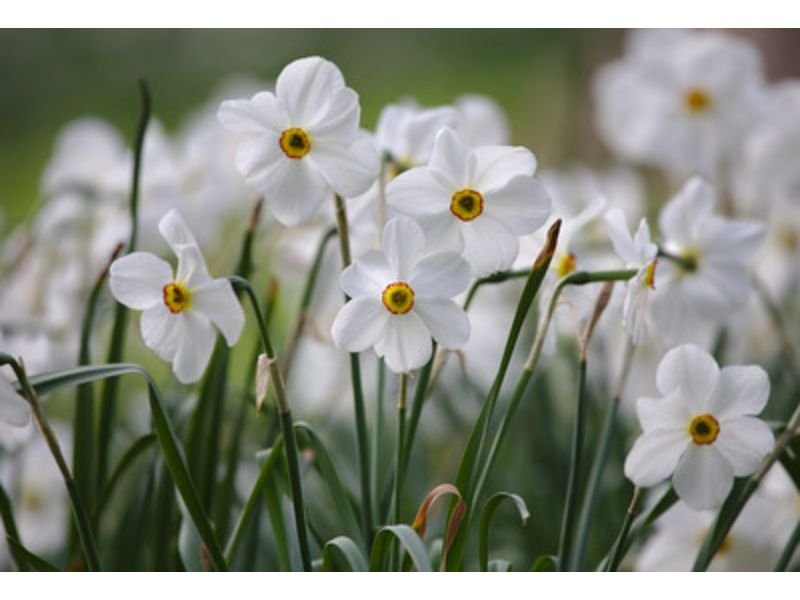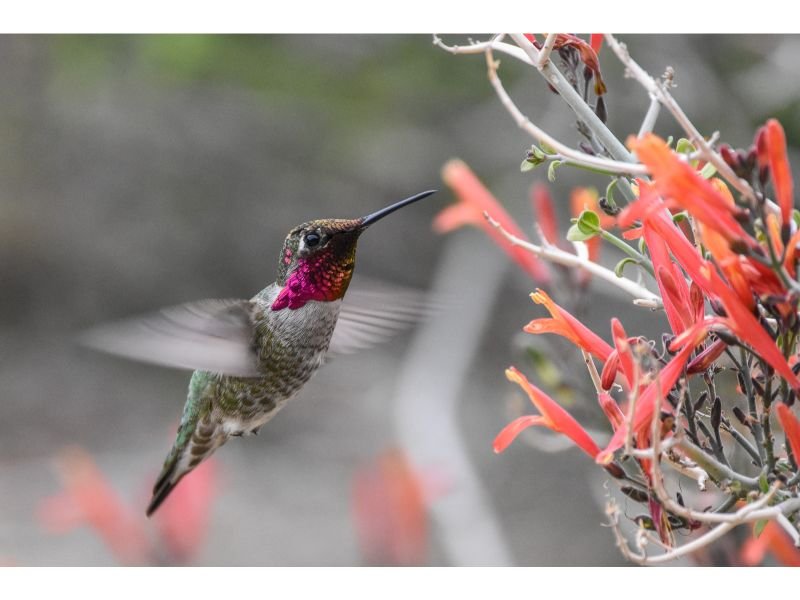Roses are one of the most popular and timeless flowers, and the Blue Moon Rose is no exception. Its stunning blue-violet hue and enchanting fragrance make it a must-have for any garden or bouquet. But what is a Blue Moon Rose, and how do you care for it? We’re here to answer all your questions and help you cultivate these magnificent blooms.

Table of Contents
What is a Blue Moon Rose?
The Blue Moon Rose, also known as the Lavender Rose, is a hybrid tea rose that was first bred in the 1950s.
It is renowned for its stunning blue-violet hue, which is rare in the world of roses. This rose variety has large, fully double flowers that bloom in flushes throughout the growing season. The blooms have a subtle, sweet fragrance, and their striking color is sure to make a statement in any garden or floral arrangement.
Caring for Your Blue Moon Rose
Now that you know what a Blue Moon Rose is let’s dive into how to care for these exquisite blooms.
Planting Your Blue Moon Rose
When planting your Blue Moon Plant, choose a location that receives at least six hours of direct sunlight each day. Ensure the soil is well-drained, nutrient-rich, and has a pH between 6.0 and 6.5. Dig a hole that is twice as wide and deep as the rose’s root ball. Place the root ball in the hole, and backfill it with soil, tamping it down gently. Water the plant thoroughly.
Watering Your Blue Moon Rose Plant
Your Blue Moon Rose requires consistent watering, especially during its first growing season. Water deeply, providing the plant with at least one inch of water per week. Ensure the soil is moist but not waterlogged, as this can lead to root rot. Water the plant at the base, avoiding wetting the leaves, as this can lead to fungal disease.
Fertilizing Your Blue Moon Rose
Fertilizing your Blue Moon is crucial to ensure healthy growth and abundant blooms. Fertilize the plant with a balanced fertilizer, such as a 10-10-10 blend, in early spring before new growth emerges. Repeat every six weeks throughout the growing season. Avoid fertilizing the plant after August, as this can stimulate new growth that may not harden off before winter.
Pruning Your Blue Moon Rose
Pruning your Blue Moon Rose is essential to maintain its health, and shape, and promote robust blooming. Prune in early spring before new growth appears, removing any dead or damaged wood. Cut back the plant to half its height, leaving three to five healthy canes. Throughout the growing season, remove spent blooms to encourage new growth and prolong blooming.
Protecting Your Blue Moon
Your Blue Moon Rose is susceptible to common rose diseases and pests, such as black spots and aphids. To protect your plant, practice good garden hygiene by removing any fallen leaves or debris around the plant. Inspect the plant regularly for signs of disease or pests, and treat immediately using organic or chemical methods as appropriate.
Toxicity of blue moon rose for humans and pets

Blue moon roses, like many other ornamental plants, are not intended for consumption and may pose a risk if ingested by humans or pets. While there is limited information available on the exact toxicity of blue moon roses, it is important to exercise caution when handling and planting them.
Some varieties of blue moon roses may contain chemicals such as glycosides, which can cause gastrointestinal upset, vomiting, and diarrhea if ingested. These symptoms may be more severe in pets or small children.
Additionally, blue moon plants may be treated with pesticides or other chemicals during cultivation, which can further increase the risk of toxicity if ingested. It is important to carefully wash blue moon roses and any other plants before bringing them into your home or garden to minimize the risk of exposure to these chemicals.
If you suspect that you or your pet has ingested a blue moon or any other potentially toxic plant, seek medical attention immediately. It may also be helpful to bring a sample of the plant with you to help identify the specific variety and aid in treatment.
Overall, while blue moon roses plants can add a beautiful touch to any garden or home, it is important to exercise caution when handling and planting them. Keep them out of reach of small children and pets, and avoid ingesting them yourself.
How to grow blue moon roses indoors or in containers?
Growing blue moon roses indoors or in containers can be a wonderful way to enjoy their beauty and fragrance all year round. Here are some tips for successfully growing blue moon roses in an indoor or container environment:
- Choose a suitable container: Blue Moon requires a deep and wide container to allow for adequate root growth. Choose a container that is at least 18 inches in diameter and 18 inches deep. It should also have drainage holes at the bottom to prevent water from accumulating and causing root rot.
- Use the right soil: Blue moon roses prefer well-draining soil that is rich in organic matter. A mixture of peat moss, perlite, and compost can provide the right balance of moisture and nutrients for the plant.
- Provide adequate light: Blue moon roses need at least six hours of direct sunlight per day. Place the container in a location that receives ample sunlight, such as a south-facing window or a patio that gets full sun.
- Maintain consistent moisture: Blue moon roses require consistent moisture to thrive, but overwatering can lead to root rot. Water the plant when the top inch of soil feels dry to the touch, and make sure to water deeply to reach the roots.
- Fertilize regularly: Blue moon roses benefit from regular fertilization to promote healthy growth and blooming. Use a balanced fertilizer every two weeks during the growing season.
- Prune regularly: Pruning helps to promote healthy growth and shape the plant. Remove any dead or damaged branches, and trim back the plant to encourage new growth.
With these tips, growing blue moon indoors or in containers can be a rewarding experience. With proper care and attention, you can enjoy the beauty and fragrance of blue moon roses year-round.
Is Blue Moon Rose a climbing plant and can you make it a vine?

Blue moon roses are not considered climbing plants by nature, but they can be trained to grow up a trellis or support to create a vine-like effect. With the right care and attention, you can encourage blue moon roses to grow vertically and create a stunning focal point in your garden.
To train blue moon roses to grow as a vine, you will need to provide them with a support structure to climb on. This can be a trellis, arbor, or other vertical structure that is sturdy enough to support the weight of the plant as it grows.
Once you have your support structure in place, you can begin training the blue moon roses to grow up. Gently tie the stems to the support structure with twine or plant ties, taking care not to damage the plant as you do so.
As the plant grows, continue to tie the stems to the support structure and prune away any growth that is not in line with the desired shape. This will help to encourage the blue moon to grow vertically and create a vine-like effect.
It is important to note that blue moon roses may require additional support as they grow to prevent the weight of the plant from pulling it down or causing damage. Regular pruning and training can help to keep the plant healthy and looking its best.
Overall, while blue moons are not climbing plants by nature, they can be trained to grow as a vine with the right care and attention. With a little patience and dedication, you can create a stunning vertical garden feature with these beautiful flowers.
Conclusion
A Blue Moon Rose is a beautiful and rare addition to any garden or floral arrangement. By following the tips we’ve provided on planting, watering, fertilizing, pruning, and protecting your Blue Moon, you can ensure it thrives and produces abundant blooms. Now that you know how to care for these magnificent blooms, you can enjoy their enchanting fragrance and stunning beauty all season long.

Gardening is my passion and growing plants indoors has always been a stress relief for me. Grow a banana tree in my apartment once (although failed to produce bananas).






